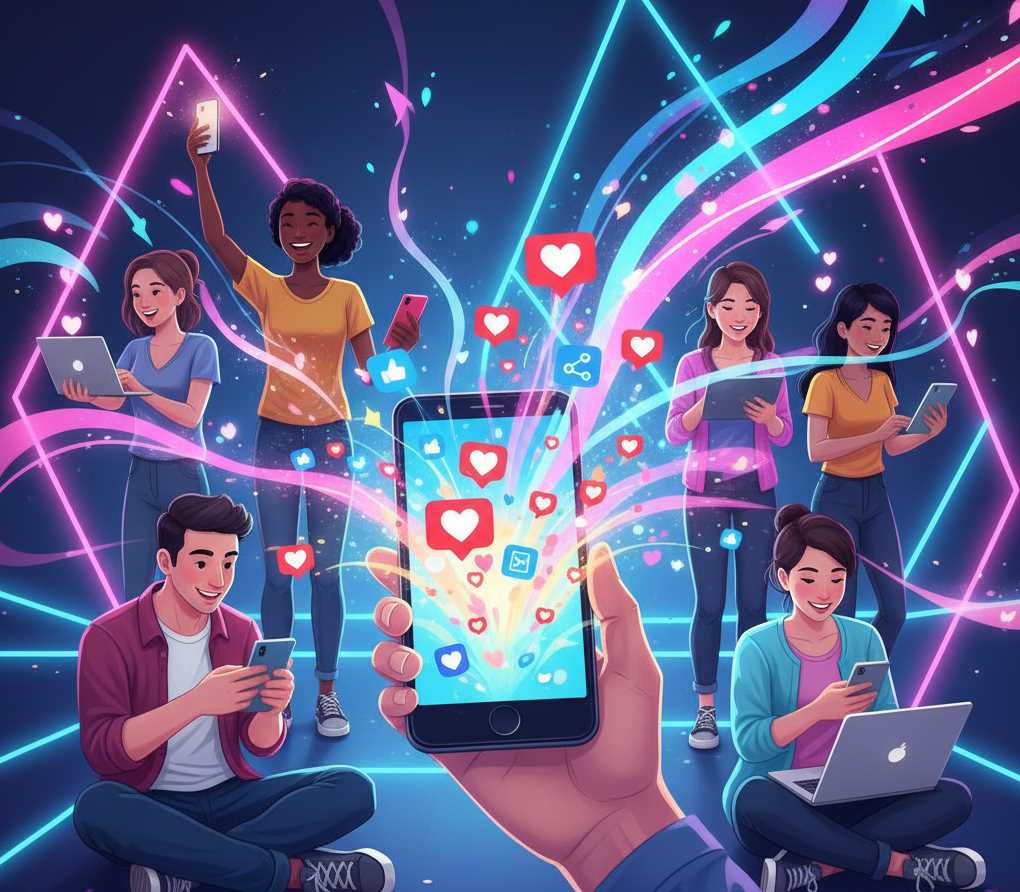
One video, one tweet, one meme—and suddenly millions of people are talking about your brand. Viral marketing might seem like lightning in a bottle, but there’s actually a fascinating science behind why certain campaigns spread like wildfire while others fizzle out completely.
Understanding what makes content go viral isn’t just about luck or timing. It’s about tapping into fundamental human psychology and social behaviors that drive us to share, engage, and connect. This post explores the key psychological triggers that make viral marketing so powerful and how brands can harness these principles to create campaigns that capture attention and spread organically.
The Science of Sharing: What Makes Content Irresistible
Emotional Triggers Drive Action
The most successful viral campaigns share one common trait: they make people feel something intense. Research shows that high-arousal emotions—both positive and negative—are the strongest predictors of viral content.
Joy, surprise, anger, and awe consistently outperform low-energy emotions like sadness or contentment when it comes to sharing behavior. When Dollar Shave Club’s irreverent launch video went viral, it wasn’t just because it was funny—it evoked surprise, delight, and a sense of rebellion against overpriced razors.
Brands that master emotional storytelling create content that viewers can’t help but share. The key is intensity over sentiment. A campaign that makes someone moderately happy might get a like, but one that makes them laugh out loud gets shared with their entire network.
Social Currency: Making People Look Good
People share content that makes them appear smart, funny, or in-the-know. This concept, called social currency, explains why complex dance challenges, insider jokes, and exclusive previews spread so rapidly.
Consider how Tesla’s Cybertruck reveal became viral despite—or perhaps because of—its unconventional design. Early adopters and tech enthusiasts shared their reactions not just about the product, but to signal their position at the cutting edge of innovation.
Smart marketers design campaigns that give their audience something valuable to share. Whether it’s surprising statistics, clever insights, or exclusive access, successful viral content always answers the question: “How does sharing this make me look?”
The Power of Story and Narrative
Humans are wired for storytelling. We remember stories 22 times more effectively than facts alone, and we’re naturally compelled to share narratives that resonate with our own experiences or worldview.
Viral campaigns often follow classic story structures: an underdog facing challenges, a surprising revelation, or a transformation journey. These narratives tap into universal themes that transcend demographics and cultural boundaries.
The most effective viral stories also leave room for interpretation and personal connection. They’re specific enough to be memorable but universal enough for diverse audiences to see themselves in the narrative.
Psychological Principles That Fuel Viral Success
Social Proof and the Bandwagon Effect

Once content gains initial traction, social proof accelerates its spread exponentially. People are more likely to engage with content that others have already shared, creating a snowball effect that can propel campaigns to viral status.
This psychological principle explains why early momentum is crucial for viral success. The first 1,000 shares are often more valuable than the next 10,000 because they establish the social proof needed for widespread adoption.
Platforms like TikTok and Instagram amplify this effect with features that highlight trending content, making popular posts even more visible and shareable.
The Need for Connection and Community
Viral content often creates a sense of shared experience or inside knowledge among participants. Challenges, hashtags, and movements succeed because they offer people a way to connect with others around a common interest or cause.
The Ice Bucket Challenge demonstrated this perfectly. Participants weren’t just raising money for ALS research—they were joining a global community of people taking action together. The campaign’s viral nature came from its ability to make individual participation feel like part of something bigger.
Timing and Cultural Relevance
Viral campaigns often succeed by tapping into current events, cultural moments, or collective experiences. They feel timely and relevant, giving people a reason to share right now rather than later.
This principle explains why newsjacking—the practice of inserting your brand into trending conversations—can be so effective when done thoughtfully. The key is authentic relevance, not forced connections to whatever happens to be trending.
The Role of Platform Dynamics
Algorithm Amplification
Social media algorithms play a crucial role in viral success by rewarding content that generates high engagement quickly. Posts that receive rapid likes, comments, and shares get pushed to more users, creating a feedback loop that can turn moderately popular content into viral sensations. Understanding platform-specific dynamics is essential for viral marketing success. For instance, viral marketing on TikTok leverages the platform’s “For You Page” algorithm, which rewards creativity and early engagement, allowing even small accounts to reach millions of viewers overnight. What works on TikTok’s algorithm may not translate to LinkedIn’s professional network or Twitter’s real-time conversation format.
Format and Accessibility
Viral content is typically easy to consume and share. Short videos, simple images with text, and snackable formats perform better than long-form content in viral contexts.
The most successful viral campaigns are also platform-native. They don’t feel like advertisements adapted for social media—they feel like natural extensions of the platform’s existing content ecosystem.
User-Generated Content and Participation
The most powerful viral campaigns don’t just ask people to share—they invite them to participate and create. When users become co-creators rather than passive consumers, they develop a stronger emotional investment in the campaign’s success.
Challenges, hashtags, and remix culture all tap into this participatory dynamic. Users feel ownership over their contributions, making them more likely to promote the campaign within their networks.
The Dark Side of Viral Marketing

Unpredictability and Risk
Viral campaigns can spiral beyond a brand’s control. What starts as a positive buzz can quickly turn negative if the campaign is misinterpreted or if cultural contexts change rapidly.
Brands must be prepared for both positive and negative viral outcomes. Crisis management plans and rapid response capabilities are essential components of any viral marketing strategy.
Short-Lived Impact
Viral attention often fades as quickly as it arrives. The same psychological principles that drive rapid sharing also contribute to shortened attention spans and quick movement to the next trending topic.
Successful brands plan for post-viral engagement, having strategies ready to convert temporary attention into lasting relationships with their audience.
Turning Viral Principles into Marketing Strategy
Understanding why viral marketing works is only the first step. The real challenge lies in applying these psychological principles to create campaigns that genuinely connect with audiences while serving business objectives.
Start by identifying the emotions and stories that naturally align with your brand values. The most authentic viral campaigns don’t feel manufactured—they feel like organic extensions of what the brand already represents.
Focus on creating content that provides genuine value to your audience, whether that’s entertainment, information, or social currency. Viral marketing works best when it doesn’t feel like marketing at all.
Finally, remember that viral success often comes from understanding your audience deeply enough to predict what they’ll want to share. The brands that consistently create viral content are those that truly know their communities and can tap into their collective psychology.
Viral marketing succeeds because it leverages fundamental aspects of human nature: our need for connection, our desire to look good to others, and our love of compelling stories. By understanding these psychological drivers, brands can create campaigns that not only capture attention but also inspire the kind of authentic sharing that turns customers into advocates.
Learn more about: Trend Marketing Mastery: How to Drive Growth with Real-Time Consumer Insights










Leave a Reply